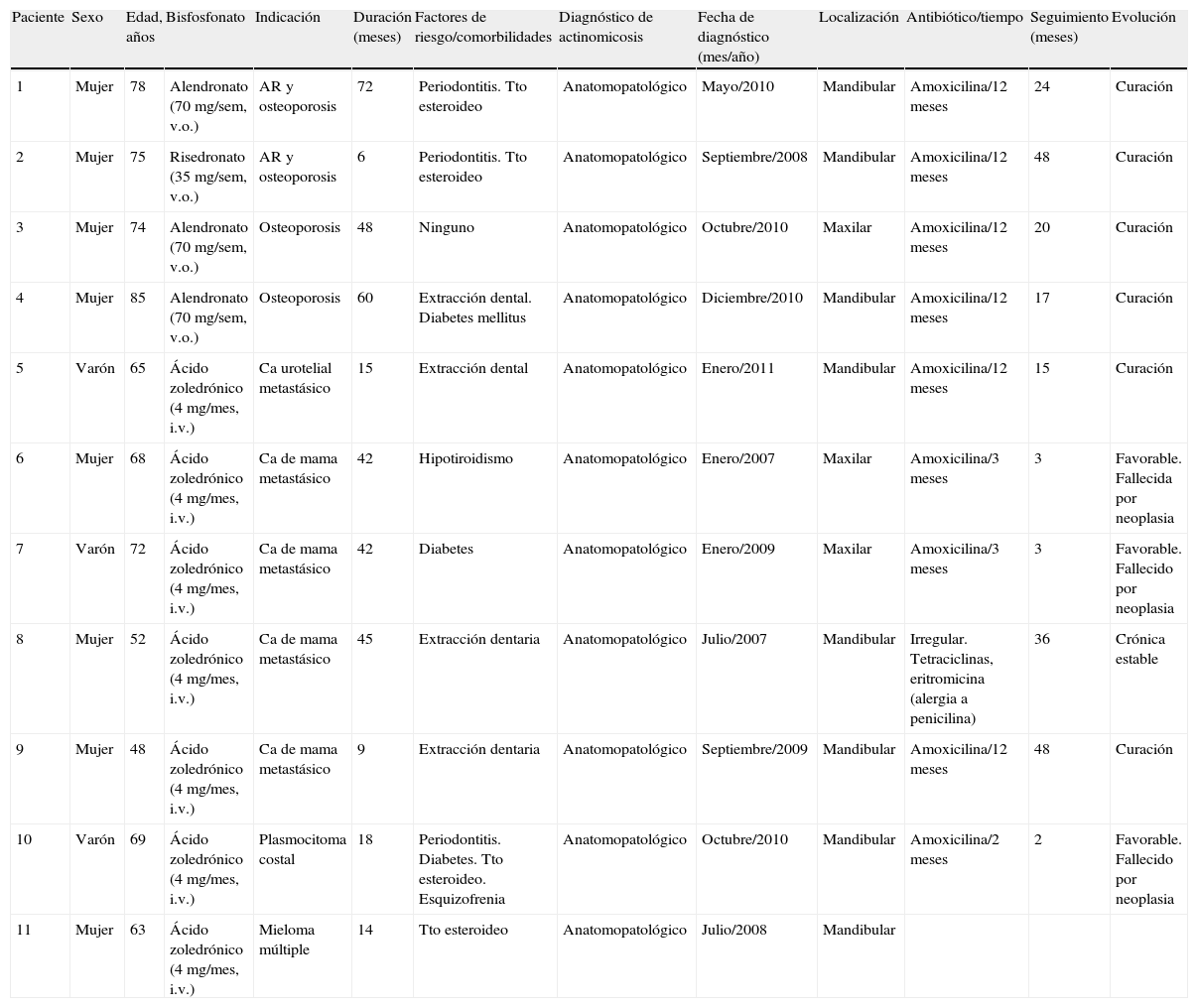La osteonecrosis maxilar asociada a bisfosfonatos (OMAB) ha centrado mucho interés desde su reciente descripción. Su patogenia aún no está aclarada; hasta hace poco tiempo se la consideraba una complicación no infecciosa, pero estudios recientes parecen implicar a bacterias del género Actinomyces. El objetivo del trabajo es analizar los casos de OMAB de nuestra institución.
Pacientes y métodoRevisión de historias clínicas de los pacientes con diagnóstico de OMAB en la consulta de Cirugía Maxilofacial de nuestro hospital.
ResultadosHemos encontrado 11 casos de OMAB: 4 mujeres en tratamiento con alendronato o risedronato oral por osteoporosis y 7 pacientes oncológicos en tratamiento con ácido zoledrónico intravenoso. En todos ellos se demostró invasión ósea por bacterias del género Actinomyces. En 9 casos se realizó tratamiento prolongado con amoxicilina con evolución clínica favorable en todos ellos, si bien 3 han fallecido por su neoplasia. Por el contrario, una paciente con alergia a betalactámicos y tratamiento irregular con eritromicina y tetraciclinas mantiene una evolución crónica de las lesiones. En otro paciente no hay información.
ConclusionesActinomyces desempeña un papel importante en el desarrollo de OMAB y el tratamiento antibiótico específico mejora el pronóstico de este proceso.
Bisphosphonate related osteonecrosis of the jaw (BRONJ) has raised considerable interest since its recent description. Its pathogenesis is not yet clarified; formerly it has been considered a non-infectious complication, but recent studies seem to implicate bacteria of the genus Actinomyces. The objective of this study is to analyze the cases of BRONJ in our institution.
Patients and methodsReview of medical records of patients diagnosed of BRONJ in the Maxillofacial Surgery Unit of our hospital.
ResultsWe have found 11 cases of BRONJ in our hospital: 4 women taking oral alendronate or risendronate for osteoporosis and 7 cancer patients treated with intravenous zolendronic acid. All of them showed bone invasion by bacteria of the genus Actinomyces. Nine patients underwent prolonged treatment with amoxicillin with favourable clinical outcome in all of them, but 3 died of their malignancy. By contrast, one patient with beta-lactamic allergy and irregular treatment with erythromycin and tetracycline had a chronic evolution of the lesions. There was no information for other patient.
ConclusionsActinomyces play an important role in the development of BRONJ and specific antibiotic treatment improves the prognosis of this process.
Artículo
Comprando el artículo el PDF del mismo podrá ser descargado
Precio 19,34 €
Comprar ahora









